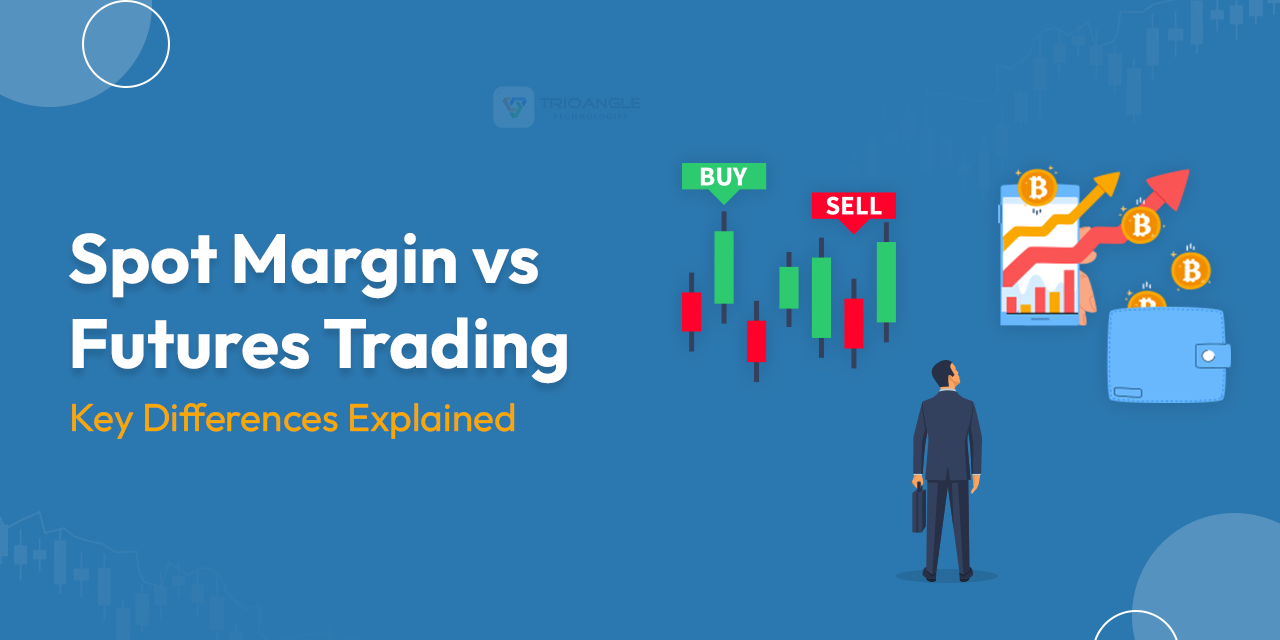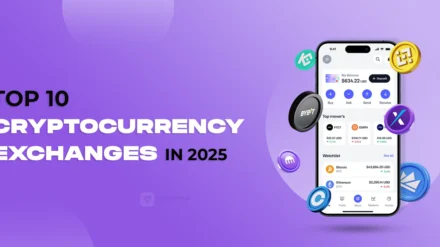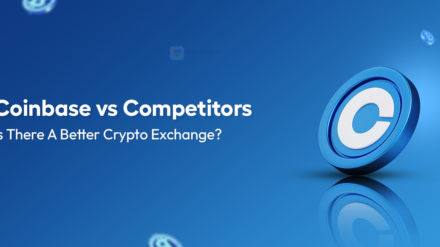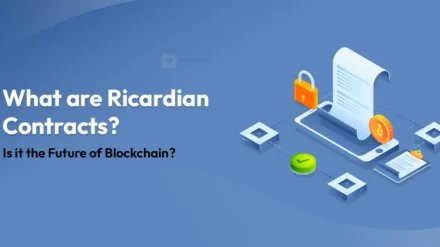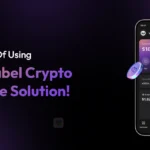Explore Spot Margin Vs Futures trading with its mechanism and revenue streams. Let’s get in. You’ll get to know what spot, margin, and futures trading are, explained deeply with their workings. Also, for better understanding, I’ve added target traders and their revenue POV. Also at the end of this blog, I’ll reveal the crypto exchange platform that carries all these features and how you can implement it in your businesses.
Spot Margin Vs Future Explained with Real-time Examples
Imagine walking into a grocery store. You’re noticing three people standing at the bill counter.
First person buys groceries and settles the bill at the moment.
Second person swipes the credit card to buy more than they can afford.
Third person pays and books an item that’ll arrive next week or later.
Yes, we’ve encountered all such types of buyers in our daily lives.
Now connect it with crypto trading. What the first person does is called Spot Trade. The second one who buys with a credit card is the Margin Trade. And the third one, who pays the price for the future arriving item is what Future Trade.
Knowing the importance of each type is a must for traders. And knowing what types of traders it caters to and how it boosts revenue is quintessential for businesses. This Spot Margin Vs Futures Trading comparison will solve all your queries in mind. I’m dedicating this blog to all the crypto enthusiasts to get better insights for their next move.
Spot Trade
Spot trading involves the direct purchase or sale of a cryptocurrency for immediate settlement. In this market, the buyer pays the full amount of the asset upfront, and ownership is transferred instantly. Trades are executed based on the current market price. It is also known as the “spot price.”
Working
Step #1
The user selects the trading pair.
Step #2
User specifies the amount they wish to buy/sell.
Step #3
They also select order types such as limit, market, stop-limit, and trailing stop.
Step #4
Then they place their order.
Step #5
The user’s order gets executed as per their order type, and the final funds get deposited into their spot wallet.
Key elements
- Real-time asset transfer
- No leverage involved
- Simple and beginner-friendly
- Trades are settled faster than other types
Target Traders
- Beginners entering the crypto market
- Traders are looking for simple buy/sell transactions
- Investors who prefer holding assets
- Day traders and swing traders use short-term strategies without leverage
Revenue POV
- Trading Fees: A percentage fee on each buy/sell transaction.
- Listing Fees: Charging project tokens to list on the spot market.
- Withdrawal Fees: Percentage-based charges when users move assets off-platform. Users can move their assets only upon the admin’s approval.
Margin Trade
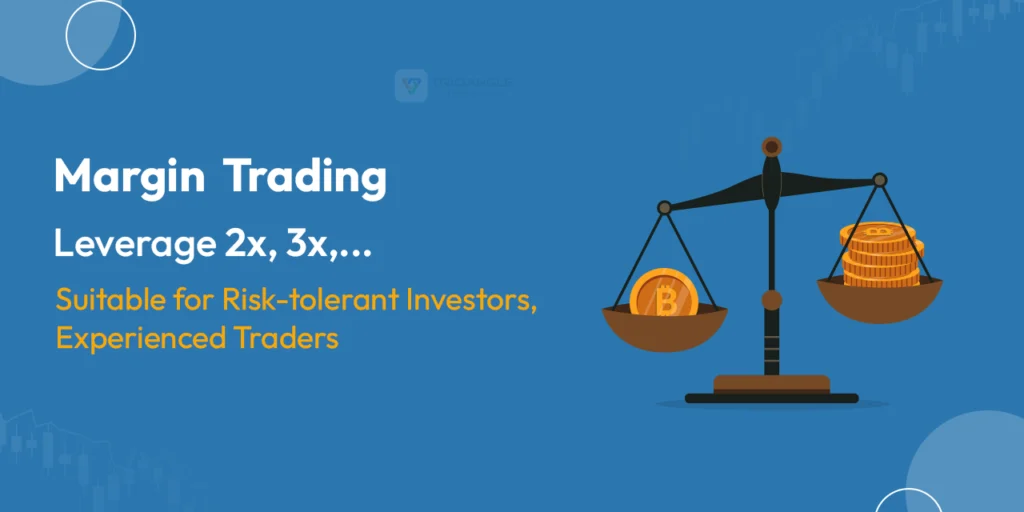
Margin trading allows users to borrow funds to enlarge their trading positions. Traders can take long or short positions using borrowed capital. Exchanges provide leverage like 2x, 5x, 10x. That’s the reason many margin trading platforms in this decade.
For Example, consider the user chooses to leverage 10x on the BTC/USDT pair. The user will deposit 1 USDT. The remaining 8 USDT will be borrowed from the exchange/admin. The deposited 1 USDT will be the initial margin(collateral). The interest will be calculated on the 8 USDT alone. And the user takes the profit from the collateral they deposited.
Working
Step #1
The user selects the trading pair
Step #2
Next, the user chooses the leverage and deposits their initial margin, aka collateral
Step #3
They also select order types such as limit, market, stop-limit, and trailing stop
Step #4
If their assets fall below the maintenance margin, users will be informed by email
Step #5
In that case, if they increase their collateral, their position remains safe. If they don’t, their collateral gets liquidated.
Key elements
- Requires initial margin (collateral) to open and maintain positions.
- Leverage magnifies potential profits and losses.
- Positions are subject to liquidation if losses reach a certain threshold.
- Margin call alerts to manage risk
Target Traders
- Intermediate to advanced traders with a good understanding of market trends.
- Traders are looking to profit from both upward and downward price movements.
- Risk-tolerant investors seeking higher returns
Revenue POV
- Interest on Borrowed Funds: Interest collected from traders on borrowed capital.
- Liquidation Fees: Collected when traders’ positions are forcefully closed.
- Margin Call Penalties: Additional charges when traders fail to maintain the minimum margin.
Futures
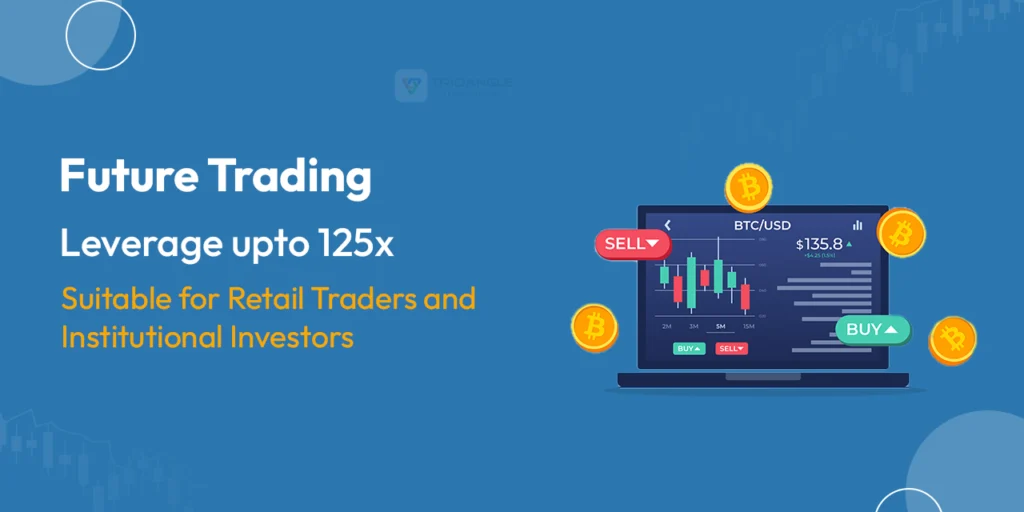
Futures trading is like placing a contract for an asset at a set price in the future. Users place contracts to buy or sell an asset at a predetermined price at a future date. Unlike spot trading, futures do not involve actual ownership of the underlying asset. These contracts can be perpetual (no expiry) or delivery (with expiry dates).
Working
Step #1
The user selects the contract
Step #2
Next, the user either chooses leverage or goes without leverage
Step #3
They also select order types such as limit, market, stop-limit, and trailing stop
Step #4
The funding rate is calculated for every 8 hours
Step #5
Depending on the type of contract, their position gets closed
Key elements
- Leverage can go as high as 100x
- Allows speculation on both rising and falling markets
- Flexibility to trade with and without expiry
- Includes complex order types and strategies (e.g., hedging, spread trading)
Target Traders
- Professional and institutional traders
- Highly experienced retail traders
- Traders who use complex strategies like arbitrage, hedging, or high-frequency trading
Revenue POV
- Trading Fees: Typically higher, with makers and takers charged differently.
- Funding Fees: A recurring payment between long and short positions to keep futures prices close to spot prices (the platform takes a share).
- Liquidation Penalties: Charged when positions are auto-liquidated.
Hope you got a better understanding of the spot margin Vs futures trading.
Let’s see which business solution contains all these features.
Where can you find a platform with all these features?
A cryptocurrency exchange platform wins the world when integrated with proper trading features. When it comes to trading features, it should cover all types of traders, from beginners to pros.
And in that list, spot, margin, and futures top the list.
- Because it caters to traders of all classes.
- And interestingly, it also brings retail and institutional investors to your platform.
Now you know why this spot margin Vs futures trading comparison was made.
I’m gonna open up a known fact. It might sound so familiar to you. You might’ve known it. However, I need to make new visionaries aware of the current market scenario. Binance is one of the crypto exchange platforms that includes all such trading features. Other than spot, margin, and futures, it has numerous advanced features that any platform would die to even think of.
As of now, cloning Binance is the popular business choice among entrepreneurs. And hence the birth of Binance Clone Script occurred. It has paved the way and broken the myth that a crypto exchange platform can be launched faster.
Binance clone script is a pre-built crypto exchange software that includes basic and trading features like spot, margin, futures, and more. Additionally, it also carries many features and functionalities, like the Binance NFT marketplace. Adopting it as a business model allows businesses to enter the crypto market much faster. It’s pretty sure that mastering your business with a Binance clone script will be simple after reading this article.
If you’re curious to learn more about it, then just dive into the next section. I bet you won’t regret it.
Remarkable Features of Binance Clone Script
- Spot, Margin, Futures, Copy, P2P
- Trading Bots, Crypto Loans
- Referral, Affiliate Programs
- VIP Benefits
- LaunchPad, Airdrop
- Anti-Phishing Measures
- KYC Verification
- Two-Factor Authentication
Folks, let’s wind this up and move on to the concluding insights.
The Final Spotlight
Hope you got A to Z about Spot Margin Vs Futures Trading. Each of them brings in a different type of user, a different source of revenue, and a different growth curve for your exchange.
If you’re serious about entering this arena don’t just ask which trading model is better.
Ask yourself, how can I offer them all under one powerful roof?
Solutions like the Binance Clone Script is your all-in-one key you seek for. It’s the strategic move to enter a billion-dollar market faster. Because now you know that Binance clone script is with battle-tested features already in place.
So, No matter if you’re targeting cautious beginners, calculated risk-takers, or seasoned strategists. Always make sure your platform speaks their language. The key differences of spot margin vs futures guide will get you to the point where you wanna be.
Ready to build a trading hub that does it all?
Let’s bring this to life. Because your traders are waiting.

